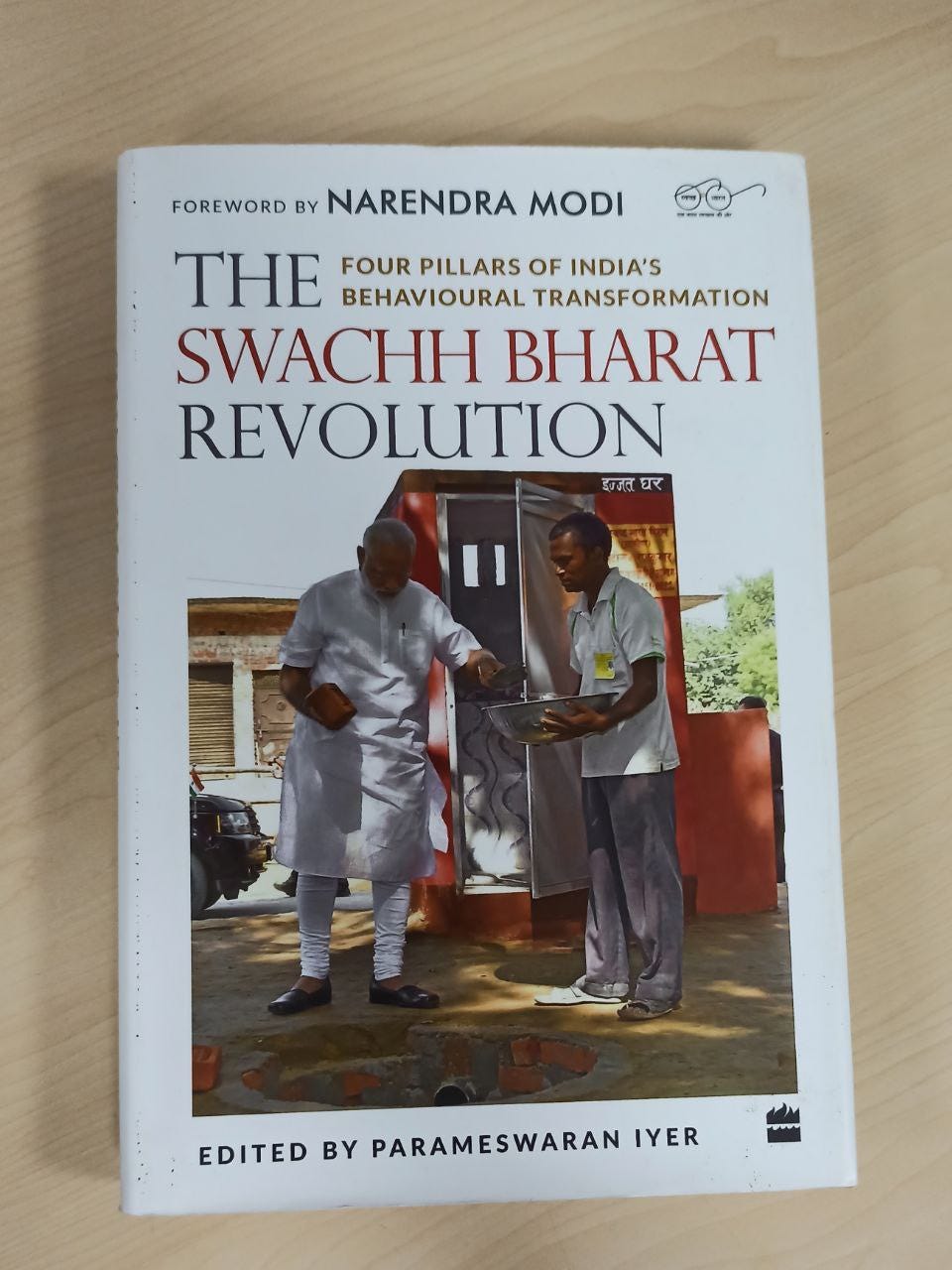Useful snippets from the book - "The Swachh Bharat Revolution"
Paper-2: Rural Development | Reading Time - 2 min
When the Swachh Bharat Mission (SBM) was announced by the Prime Minister in 2014, many wondered if this would ever happen. But in a span of five years, India has leapfrogged on this journey. It has achieved SDG 6.2 - Sanitation for all, 11 years before the UN's SDG target.
Three Facts:
Rural Sanitation coverage increased from 39% in 2014 to 99% in 2019.
6.25 Lakh Swachhagrahis worked on Behaviour change at the grassroots level.
20 Cr volunteers were mobilised under the Swachh Sundar Shauchalaya and Swachhata Hi Seva campaign.
Five Report Findings
WHO report 2018: SBM would have saved 3 lakh lives by Oct 2019 and 1 lakh lives on an annual basis.
UNICEF report: 82% of people felt that their status and prestige has increased.
UNICEF report: 87% of women felt safer after getting a toilet.
UNICEF report: In ODF village, each family saves Rs 50,000 annually on account of reduced medical costs and time.
UNICEF report: Economic benefits of sanitation per household outweigh the investment by 4.3 times over a ten-year period.
The book is broken down into Four Lessons learned - 4Ps
Political Leadership
Public Financing
Partnerships
People's Participation
Parameswaran Iyer was a former IAS officer who headed the innovative community-led Swajal Project in Uttar Pradesh and Uttarakhand in the 1990s. He later served as a manager for Water in the World Bank.
With over 25 years of experience in the Water and Sanitation sector, he displayed his leadership skills in the execution of the SBM program. He currently heads the NITI Ayog as the CEO.




